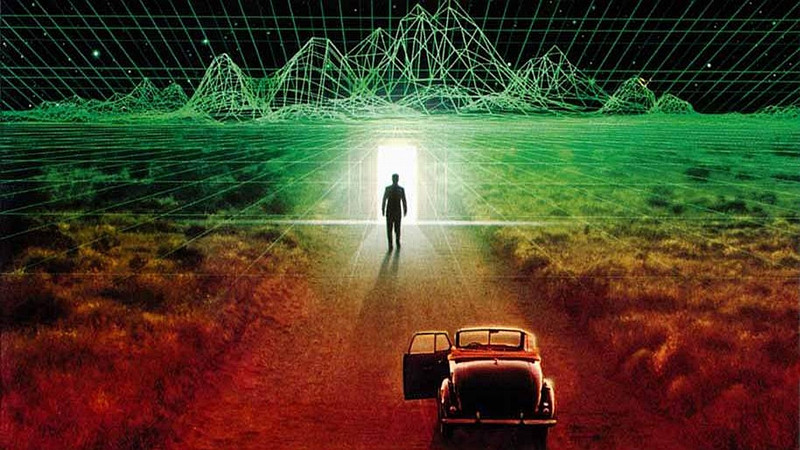
Science fiction can be entertaining or philosophical, lighthearted or political, dark or ethereal. Sometimes it can be all these things combined together. It can be used in pure genre movies or exploited as a medium for arthouse installations.
When we think about sci-fi, “Metropolis” (1927), “2001: A Space Odyssey” (1968), “Solaris” (1972) and “Blade Runner” (1982) come to mind, as well as “Star Wars” (1977), “The Terminator” (1984) and “The Matrix” (1999). We think about all these classics, and sometimes we forget about the lesser-known movies that contributed to the beauty of this genre. The 10 movies on the list are worth seeing for different takes on the ever-changing imagination of science fiction.
1. Things to Come (1937)
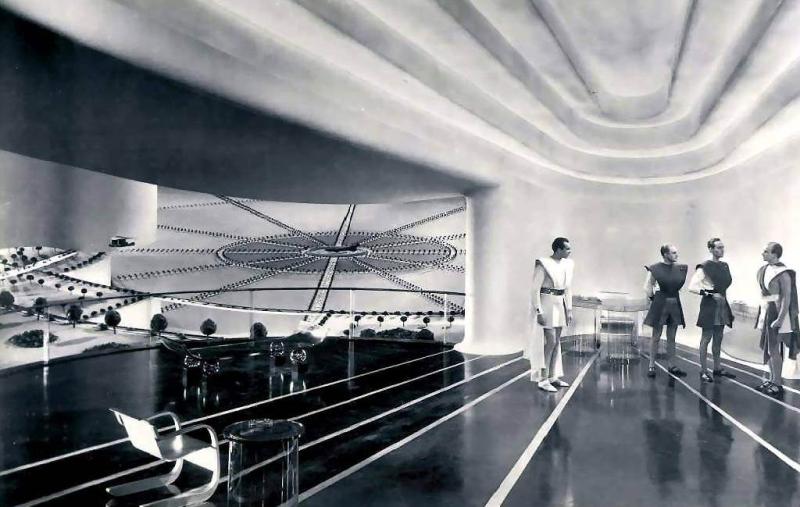
The year is 1940. A second world war has broken out in Europe. John Cabal (Raymond Massey), a businessman from the English city of Everytown, becomes a pilot and goes to war. After 20 years, the war is still going, but the people forgot why they started it. The world is in ruins and is facing a new Dark Age, and in 1966, a biological weapon called the “wandering sickness” kills half of the world’s population.
After 10 years, Everytown is ruled by a warlord named Rudolf (Ralph Richardson). He managed to stop the “wandering sickness” by killing all the people infected. He rules with absolute power and started a new war against the people of Floss Valley. The world’s technology is destroyed and people switch back to animals as their source of motive energy.
On May Day, John returns to his hometown with an airplane, bringing the news that a new technological society has been born in the North, under the guidance of a group of engineers called Wings Over the World. Cabal is arrested by Rudolf’s thugs and imprisoned, but engineers from the group come to save him and free the people of Everytown.
After 30 years of technological progress, Everytown is a futuristic city, but people are divided between who wants the progress to continue and who wants it to stop. At first, “Things to Come” might seem like a classic war movie, but in the second part, the story evolves into a classic post-apocalyptic scenario, created by the global conflict, and in the last part, director William Cameron Menzies tries to imagine a futuristic society, with its technological improvements.
The movie, based on the screenplay by H. G. Wells, utilizes the sci-fi genre to analyze the consequences that war has on societies; war leads to death and the suppression of freedom in order to feed itself. Artistically speaking, the movie is beautifully shot by cinematographer Georges Périnal, and the costume design is astonishingly perfect. It’s crazy to think that the movie that predicted a second world war was released two years before the actual Second World War erupted.
2. Robinson Crusoe on Mars (1964)
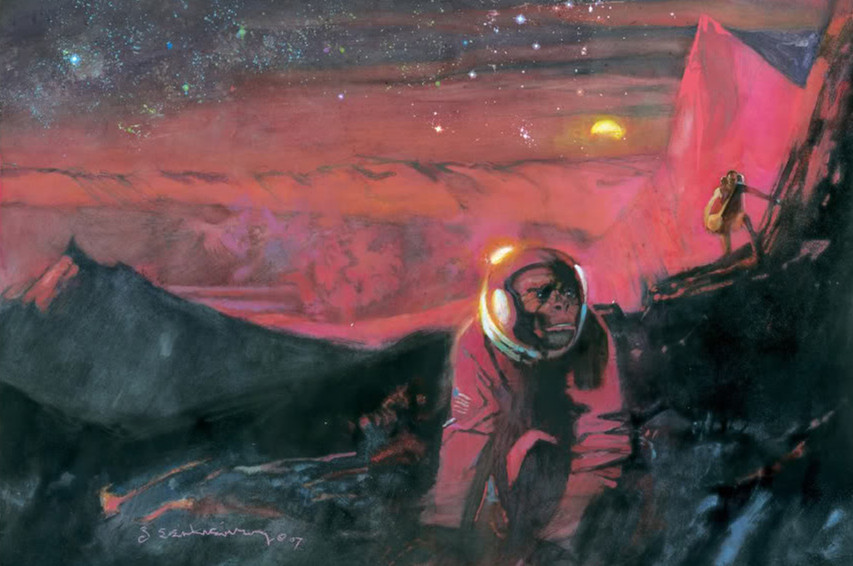
“Robinson Crusoe on Mars” is a fun and bizarre movie directed by Byron Haskin, who was mostly known for “The War of the Worlds” (1953). The title explains summarily what we’re going to see: it’s the sci-fi version on the Robinson Crusoe tale, set on Mars.
Floating near Mars, Commander Christopher “Kit” Draper (Paul Mantee) and Colonel Dan McReady (Adam West), accompanied by a monkey named Mona, are forced to use all the reserves of fuel in order to avoid a meteoroid; the lack of fuel leads them to land on Mars via individual space pod, in two different parts of the planetary surface. Draper, during the search for his fellow companion, finds Mona still alive and the Colonel dead; he’ll have to fight to survive the hostile environment, during which he’ll meet Friday, an escaped slave.
The superb use of the Mars-like landscape of the Death Valley in California and the eclectic tone of colors distinguishes this independent movie from its B-movie counterparts. Even though there isn’t any kind of new innovations regarding the archetypes of the adventure genre, the movie is definitely worth seeing for the solid acting of Mantee – who basically carries on alone for almost half of the film – and the sci-fi twist of a classic novel. It’s definitely an entertaining movie that depicts the classic story of a man who must resist against all odds.
3. Planet of the Vampires (1965)
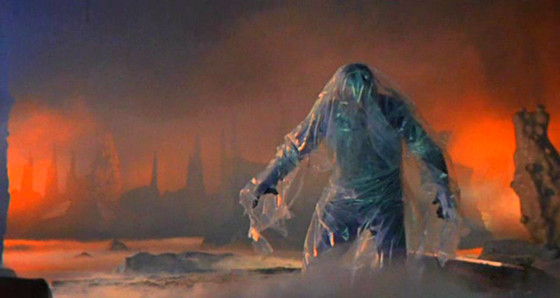
Mario Bava is one of the most influential Italian directors of all time. Strangely, he’s also one of the most underrated. He is particularly known for low-budget horror and thriller movies, like the masterpieces “Black Sunday” (1960), “Black Sabbath” (1963) and “Blood and Black Lace” (1964). However, when we talk about Bava, we can’t forget “Planet of the Vampires,” one of his best hidden gems.
The movie tells the story of two interplanetary ships – the Galliot and the Argos – that receive distress messages from an unknown planet called Aura. During the landing, the Argos crew starts to become possessed by an obscure and strange force that makes them try to kill each other. Only Captain Markary resists the force power and takes control of the situation.
The Galliot is missing; when a few members of the Argos find the ship, they discover the whole crew dead. The remaining members will have to fight against this evil force and its effects. The first thing that catches your attention is the cinematography. Bava – who was indeed a great cinematographer – is helped by Antonio Rinaldi in creating such a great lighting throughout the film. The expressionist use of blue, red and purple – with the addition of artificial fog – give the settings a gloomy and dark tone.
The other mind-blowing aspect is the environment and the special effects. With a couple of settings, a bunch of fake stones, and a masterly use of artisanal tricks, the production is able to make up for the low budget. For instance, the use of an aquarium – within which a model of a ship is submerged to simulate the rising of the dust during the landing – is just pure cleverness.
Moreover, the gore effects and the massive use of blood make this film particularly different and unique, considering the period it which was made. Lastly, we have to acknowledge the influence this movie had on “Alien,” the 1979 masterpiece by Ridley Scott; the atmosphere and some concepts of Bava’s film were definitely a landmark for this groundbreaking sci-fi horror.
4. The 10th Victim (1965)
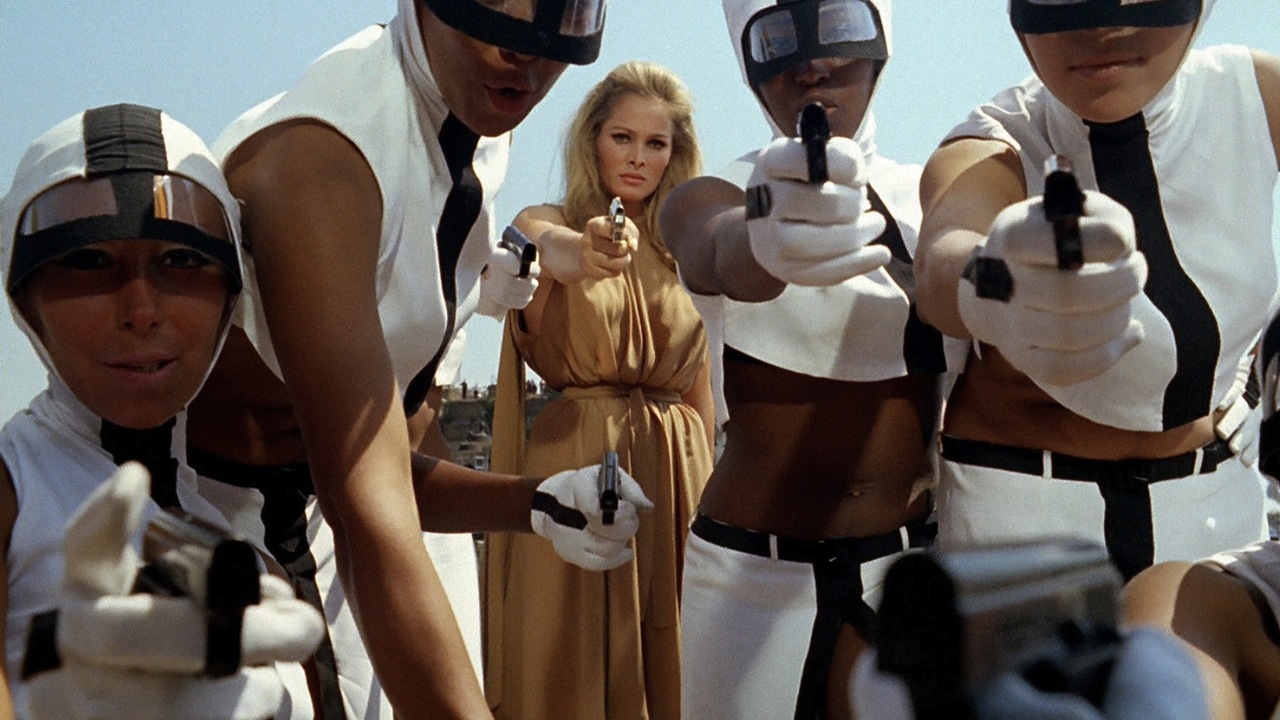
Released in the same year as “Planet of the Vampires,” “The 10th Victim” is one of the best Italian sci-fi movies ever made. In a dystopian world, in order to maintain peace on Earth, governments have organized the “Big Hunt.” All of the competitors must play 10 games – five as the hunters and five as the victims – in a one-on-one battle, and if they survive after all the rounds, they win a million dollars and can retire.
The movie follows the battle between the hunter Caroline Meredith (Ursula Andress), who is in her 10th battle, and the victim Marcello Poletti (Marcello Mastroianni). She flew to Rome with a TV crew to film the last round and earn more money with her sponsorship deal.
Director Elio Petri, who is mostly known for his 1971 Oscar winner for Best Foreign Language Film “Investigation of a Citizen Above Suspicion,” wisely exploits the architecture of Rome in order to create a futuristic environment for the story. For instance, the first meeting between Caroline and Marcello takes place in a bar set in the EUR neighborhood, which is famous for its rationalist style.
Based on the short story “Seventh Victim” by Robert Sheckley, “The 10th Victim” was a movie ahead of its time, exploring the concept of a reality game based on battles between human beings. When we think about this movie, we can’t forget similar films that came later that deal with the same theme, such as “Battle Royale” (2000) or the Hunger Games franchise (2012-2015).
5. Westworld (1973)
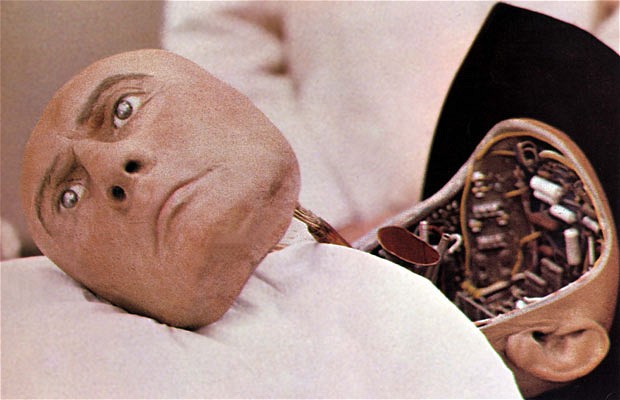
In Delos, a futuristic amusement park, there are three different themed worlds: Western World (based on the American Old West of the 1880s), Medieval World (based on medieval Europe) and Roman World (based on the ancient city of Pompeii, before it was destroyed by the eruption of Mount Vesuvius).
In these three worlds, a significant number of robots revive the way people used to live in the past. For $1,000 a day, real people can experience one of those three worlds, living in the same conditions of those periods and interacting with the androids. For instance, in Western World, human guests can shoot and kill robots, pretending to be real cowboys.
In this scenario, Peter Martin (Richard Benjamin) and John Blane (James Brolin) decide to go to Western World for a vacation, but a malfunction with the robots will soon ruin their carefree holiday. The movie, written and directed by Michael Crichton, has all the ingredients to be a cult classic.
We’ve seen the “robots rebel against humans” theme in many films, but here they’re not fighting to be free or to defend their rights; they aren’t politically driven like in the later film “Blade Runner” (1982). There is a sense of nihilism in their acting: after the malfunction, they start killing all of the guests without any specific reason, showing how these androids are completely out of control.
While the role of the robots doesn’t add a social meaning to the movie, the screenplay does. The three worlds the movie is set in – especially the Western World – are typically depicted in a romantic way in most Hollywood films; here, there is no romanticism at all.
The film strikes at the conventional and fictional representation of those worlds and could be indicated as a “revisionist western,” since most of the plot takes place in the Old West. One last note: the great performance of Yul Brynner as the Gunslinger, dressed almost exactly like his character in “The Magnificent Seven” (1960).